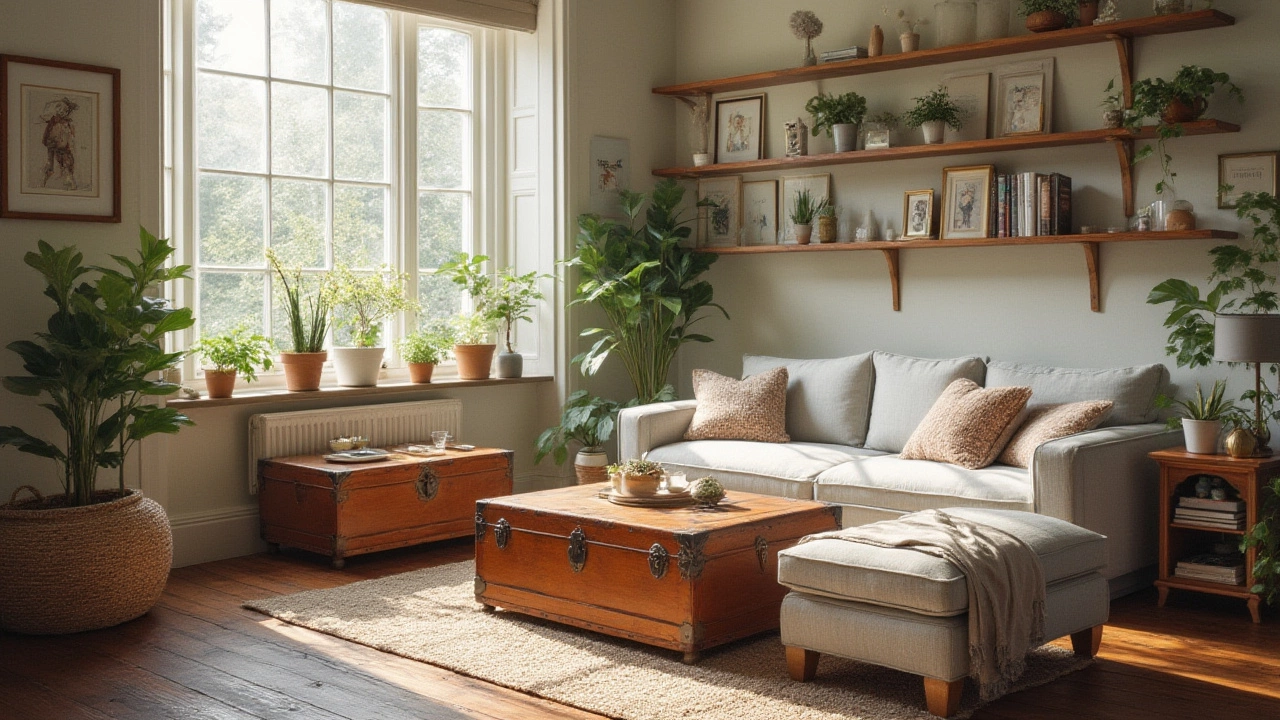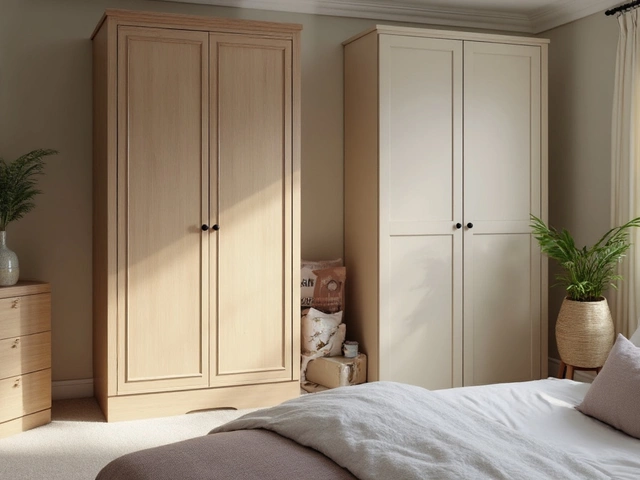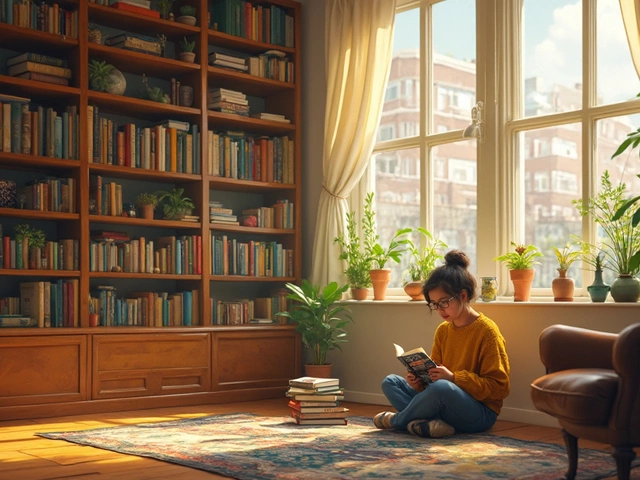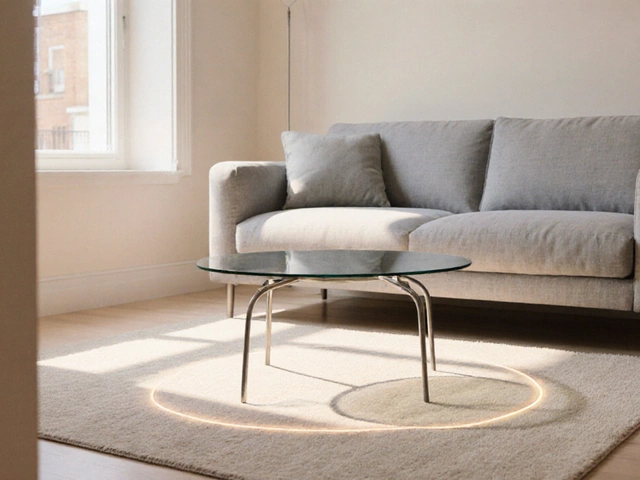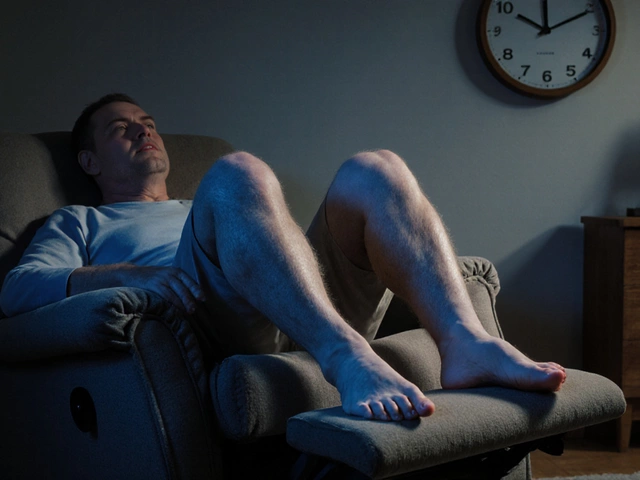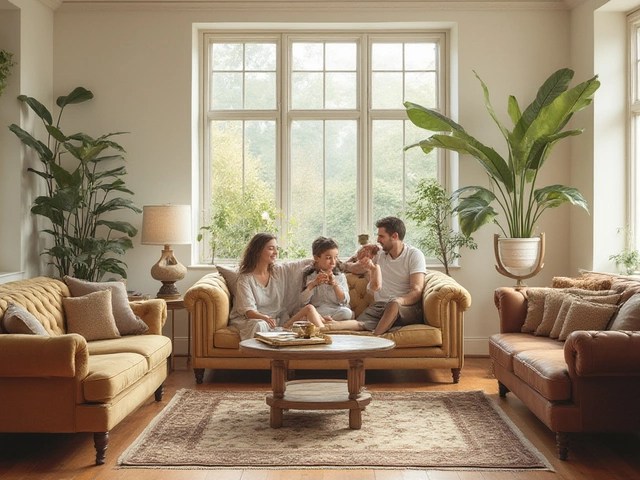Did you know that the average American home has over 300,000 items packed away inside? Seriously, just try opening the hall closet or peeking behind your couch cushions—it’s like a gateway to another dimension. Clutter sneaks up faster than you can say "Where did I put my keys?" There’s always something else needing a home: shoes, board games, winter coats, or those old birthday cards you swear you'll sort through someday. That’s where storage furniture comes crashing in like a hero—quietly, efficiently, and, if you do it right, actually adding style to your home. But what exactly counts as storage furniture, and why is everyone suddenly obsessed with it, anyway?
Understanding Storage Furniture: More Than Just a Place to Stash Stuff
Storage furniture isn’t some snooze-worthy label for boxy cabinets or plastic bins you hide in the attic. It’s the backbone of tidy homes and sleek apartments, tailored to help you wrangle all the bits and bobs life collects. Storage furniture means anything that’s designed with both purpose and a bit of panache—think bookshelves, under-bed drawers, media consoles, ottomans with secret spaces, even that vintage trunk doubling as a coffee table. Some pieces come loaded with clever compartments or dual-purpose features, so you don’t need to sacrifice style just to carve out some extra room.
Today’s storage solutions are nothing like your grandma’s heavy sideboard collecting dust in the dining room. Now, designers are getting creative, blending clean lines and bold materials with sneaky compartments. Look up "Scandi-chic" on Pinterest and you’ll find beds with drawers, minimalist benches hiding shoe racks, or even wall-mounted organizers you can tuck into the narrowest hallway. Here’s a brain-tickler: IKEA reportedly sells over 10,000 BILLY bookcases a day around the world. Why? Because adaptable shelving and modular options make storage furniture a must-have, not just a "nice-to-have."
The key to modern storage furniture is flexibility. Maybe you’ve got a studio apartment the size of a shoebox and every piece needs to earn its keep—like a storage bed with pull-out drawers or a sofa with hidden compartments under the seats. On the flip side, you might live in a bigger place but still crave a clutter-free vibe, using chic cabinets or media walls to stash away the TV remotes, gaming gear, or even the dog’s sweaters. Don’t overlook open shelving, either: it combines easy access with a spot to show off favorite books or collectibles, so you’re not just stuffing stuff out of sight but finding a happy balance between hiding and displaying.
Here’s the magic formula: great storage furniture isn’t just about hiding things. It’s about making them easy to get to, in spots that actually fit your life. Got kids? You’ll need storage they can reach (and use) themselves—cubbies and bins in the playroom, maybe. Love entertaining? Sideboards with built-in wine racks or coffee tables with drawers for coasters and chargers go a long way. And let’s not forget the number one rule of storage: if it’s not effortless, stuff piles up somewhere else. That’s why stuff like ottomans with lift-up tops are gold—plop down, stash a blanket, and it’s done.
Different Types of Storage Furniture and Where to Use Them
Thinking all storage furniture is built the same? Not even close. Each piece has its specialty—like jeans for Fridays and sweatpants for lazy Sundays. Here’s a breakdown, room by room:
- Living room: This is cloak-and-dagger central for clutter. Low-profile media units or TV stands swallow up cords, game controllers, and random mail. Storage ottomans double as footrests and magazine bins. Tall bookcases offer a spot for your vinyl collection or those board games you bust out at parties. Don’t skip out on coffee tables with built-in trays and cubbies, making fast work of remote control clutter.
- Bedroom: This is where "under the bed" goes pro. Storage beds feature pull-out drawers that swallow spare linens or off-season clothes. Nightstands with shelves or deep drawers let you keep reading material and twenty phone chargers close by but totally out of sight. Armoires and dressers come in every size, shape, and finish—extra drawers for everything from socks to electronics.
- Entryway: The first spot anyone sees—and somehow the messiest. Benches with built-in storage bins (sometimes called "mudroom benches") are a lifesaver; kick off your shoes and slide them underneath. Wall hooks paired with slim cabinets give you a no-excuses spot for dropping keys, wallets, or dog leashes. Cubby towers are game changers for busy households; everyone gets their own nook.
- Home office: Don’t let the paperwork win. Rolling file cabinets fit under desks, giving you drawers for supplies and folders. Bookshelves hold reference books, printers, even storage baskets for cords and gear. Desks now come with clever cord channels and hidden shelves—no more spaghetti messes of wires or chargers on display.
- Kitchen and dining: Pantry cabinets and kitchen islands with built-in shelves make up for tiny kitchens. Bar carts with storage draw eyes at every dinner party. Even sideboards do double duty: dinnerware and extra cutlery below, display-worthy stuff like plants or art up top.
Getting the best out of your storage furniture means really thinking about your daily routines. Hate folding laundry? Deep laundry hampers with lids solve that mental hurdle. Have lots of shoes? A bench with a shoe rack is faster than building a wall of boxes. Storage furniture isn’t just about tidying up after yourself; it’s about making your space work for you so home doesn’t feel like a constant battle against the mess. And hey, if you get a dopamine rush from color-coordinated bins, even better.
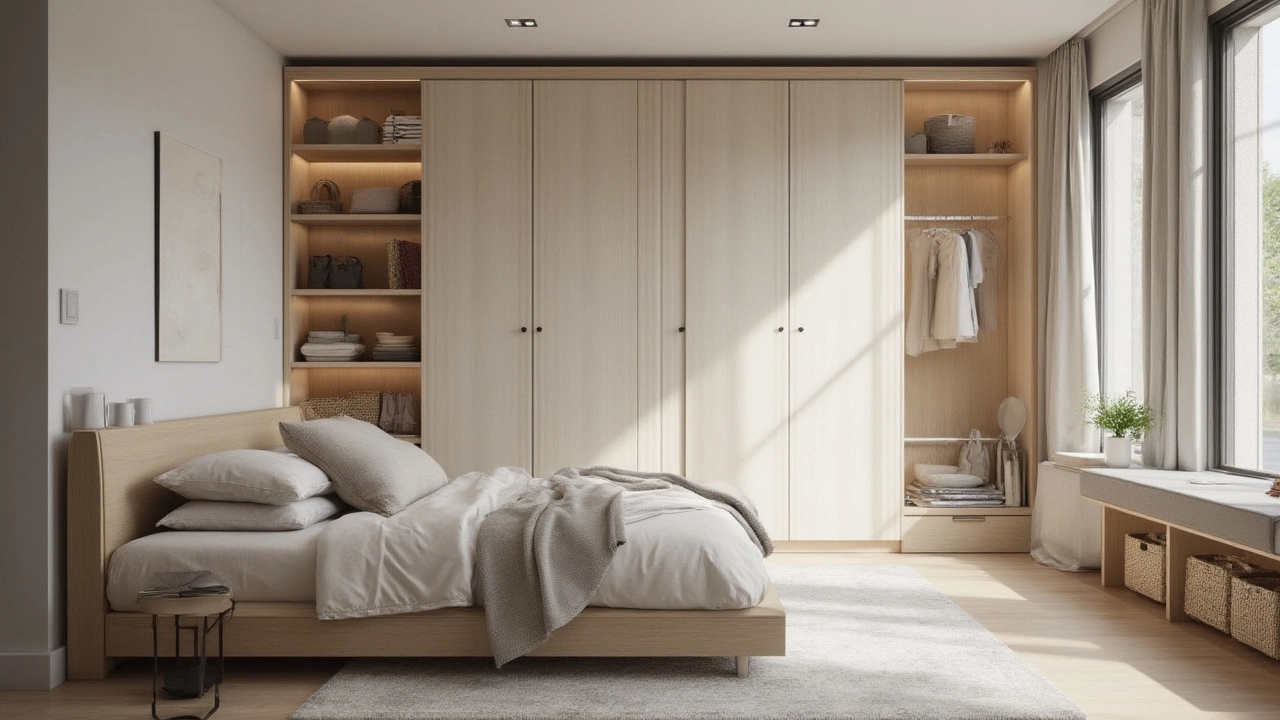
Style and Function: Marrying Looks with Practicality
If you’re picturing storage as a bunch of bland, beige boxes, time for an upgrade. There’s this myth floating around that function always comes at the expense of good looks—but that’s just not true anymore. Today, storage furniture isn’t just playing defense; it’s scoring goals for your whole interior vibe. From plush velvet benches hiding roomy trunks inside, to industrial shelving mixing wood with matte-black steel, there’s something for every taste. Even tiny details make a big impact—think leather drawer pulls, glass doors, or a pop of bright paint inside your cabinet to surprise you when you open it.
Let’s run through a real-deal stat: The National Association of Home Builders found that 63% of new-home buyers now list "plenty of storage" as a top priority—more important than fancy fixtures or even the number of bathrooms. People want that perfect combo of stylish and useful, and the market's catching up fast. Brands like West Elm, CB2, and even Target’s Project 62 line have exploded in popularity with lines that balance sleek modern shapes and built-in storage. If eco-friendliness matters to you, there are tons of small makers using sustainably harvested woods or recycled materials, making pieces that feel good and work hard.
You don’t even need to go matchy-matchy—a little contrast keeps things interesting. Try pairing a stark, white modular bookshelf with a warm walnut credenza, or anchoring your entryway with a colorful, mid-century bench. The secret sauce is choosing pieces you genuinely like, so organizing doesn't feel like a chore. Get a sense of your style, and you can build a small army of storage furniture that not only tames clutter but doubles as a design statement. Especially in small apartments or shared spaces, picking storage furniture that looks built-in (think modular shelves or benches that run along a whole wall) can even make rooms look bigger, cleaner, and more intentional.
Ever thought about getting something custom? While it costs more up front, a custom built-in or wall-to-wall storage can actually give you back space and boost your home’s value. Even basics like adding simple floating shelves above a dresser, or stacking decorative boxes in tired corners, suddenly give new homes to the stuff you love (or can’t bear to throw out). With the right storage pieces, you make your space move with you—growing or shrinking your collection, swapping out baskets or bins, or simply showing off what matters most. Design and function, hand in hand, finally getting along.
Tips for Choosing and Maximizing Storage Furniture in Your Home
Alright, so you’re ready to kick clutter to the curb and are eyeing that perfect set of storage cubes, or maybe a sleek credenza—how do you actually make the call? It isn’t just about what looks good on the showroom floor (though, let’s be honest, that’s part of the fun). You want to make sure your choices fit your space and your real-life habits. Here are a bunch of tips the pros, and messy people who learned the hard way, swear by:
- Measure your space, then measure again. A common mistake? Bringing home a storage unit only to find it blocks a doorway, or won’t fit between the sofa and wall. Keep a cheat sheet of your room’s measurements handy when shopping.
- Think vertical. When floor space runs tight, tall cabinets or wall-mounted shelves let you claim extra storage without taking up precious real estate. Stack things up, not out.
- Choose storage furniture with adjustable shelves or modular cubes. Life changes—sometimes fast—so having a system you can tweak or add to means longevity, not landfill.
- Pick multi-use pieces if possible; benches that double as toy bins, beds with drawers, or coffee tables that stash blankets. Every item should earn its keep.
- Declutter first. Don’t fall into the trap of just moving things from pile to pile—sort through your stuff and donate, recycle, or toss what you never use.
- Label bins, baskets, and drawers if you share your space, or have a big household. It’s not kindergarten, it’s just common sense, and it saves fights about where the phone charger wandered off to.
- Consider clear-fronted or glass cabinet doors for stuff you want access to but still want shielded from dust. It’s the in-between solution for display and storage.
- Don’t forget hidden spaces! The back of closet doors, under the stairs, or even above door frames can be tricked out with slim shelving for shoes, hats, or cleaning supplies.
| Type | Key Use | Typical Room |
|---|---|---|
| Storage Ottoman | Hide blankets/toys | Living Room, Bedroom |
| Bookcase | Display books/collectibles | Living Room, Home Office |
| Storage Bed | Store linens, clothes | Bedroom |
| Entryway Bench | Shoe and bag storage | Entryway |
| Sideboard/Credenza | Tableware, bar tools | Dining Room, Living Room |
| File Cabinet | Papers, office supplies | Home Office |
An easy way to avoid decision fatigue: focus on your top trouble areas. If your living room always feels crowded, one big piece—like a wide storage ottoman or multi-cube bookshelf—might solve more problems than a dozen little baskets. If it’s your closet, don’t underestimate double-hanging rods and drawer units. The goal isn’t "hiding everything," but giving it all an obvious home so finding and stashing things becomes automatic.
So, is storage furniture worth the hype? For anyone battling clutter or wrestling with a home that feels too small, investing in a few smart, stylish pieces is a game changer. It’s not just about having a spot for everything; it’s about making your space feel like yours, organized on your terms. Once you get it set up, it’s amazing how quickly the little stresses melt—leaving you with room to relax, hang out, or just kick back with friends, instead of always hunting for your stuff.
Summing it up: Storage furniture is like the secret weapon of a happy, functional home. The right piece transforms chaos into calm, gives every item a place to land, and can even make small spaces feel big and beautiful. Next time you spot a clever new cabinet, a bed loaded with drawers, or even that cozy bench by the door, remember—it’s more than furniture. It’s peace of mind, hiding in plain sight.
